This post may contains affiliate links. Read our full disclosure here.
Pear wine has quietly been making waves in the wine world, and it’s about time this fruity delight gets the spotlight it deserves. As someone who’s always on the lookout for fresh flavors to share at gatherings, I’ve noticed pear wine popping up more frequently at tastings and specialty wine shops. This delicious fruit wine offers a perfect balance of crispness and subtle sweetness that’s winning over even traditional wine enthusiasts.
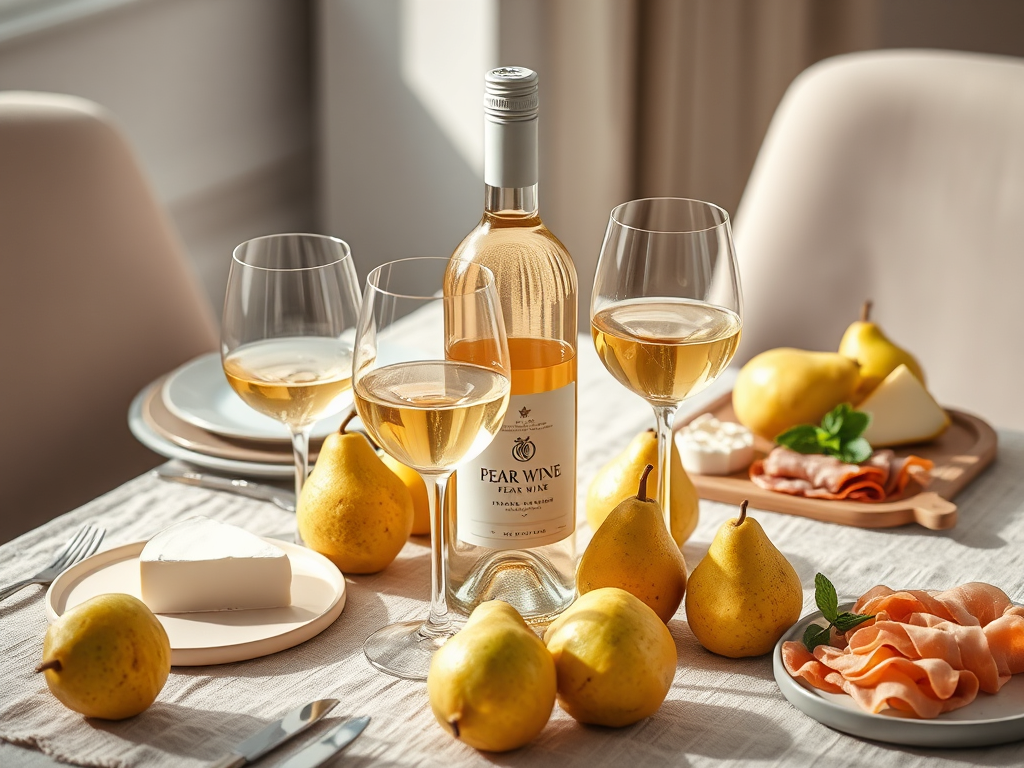
What makes pear wine so special isn’t just its unique flavor profile but its incredible versatility. Whether you’re hosting a summery brunch or looking for something different to pair with dinner, pear wine fits seamlessly into so many occasions. Let’s dive into why this underappreciated gem is quickly becoming 2025’s must-try beverage!
What Is Pear Wine and Why Is It Trending?
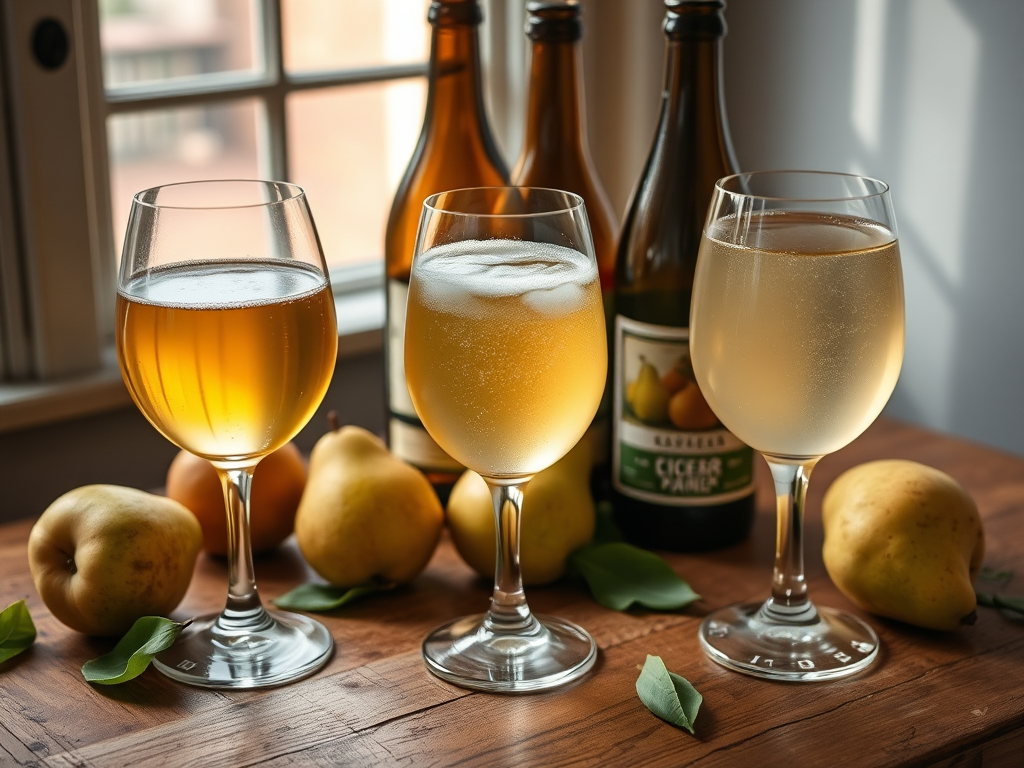
Pear wine is exactly what it sounds like – wine made from fermented pears rather than grapes. This delightful fruit-forward beverage has been produced for centuries but has recently gained newfound popularity among wine drinkers seeking something fresh. Unlike standard grape wines, pear wine captures the essence of orchard fruits with a distinctive character all its own.
The current pear wine trend connects to the broader interest in artisanal, small-batch beverages. As more people explore beyond traditional options, pear wine offers something genuinely different. Its lighter, crisper profile makes it particularly appealing as we see more drinkers gravitating toward refreshing alternatives.
- Made from fermented pears, not grapes
- Typically ranges from 10-14% alcohol content
- Offers a lighter, fresher profile than many traditional wines
- Growing rapidly as a standout fruit wine option
When I first tried pear wine at a local winery tour, I was surprised by how complex yet approachable it was. My friends who normally stick to their usual Pinot Grigio or Riesling couldn’t stop talking about how pleasantly different it tasted. That’s when I realized pear wine wasn’t just another passing fad – it has staying power in the wine world.
The Flavor Profile: What Does Pear Wine Taste Like?
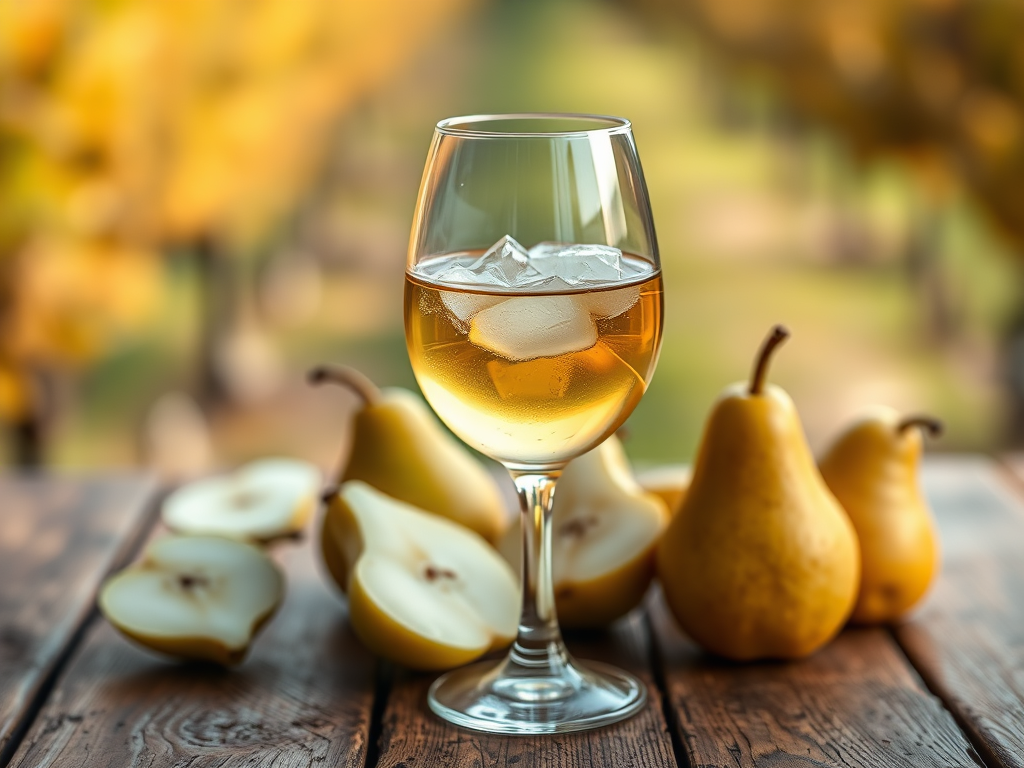
Trying to describe pear wine to someone who’s never tasted it is like explaining a new color – it’s uniquely its own thing! Most pear wines feature a soft, fruity character that ranges from off-dry to notably sweet depending on the maker. The flavor evokes ripe pears (naturally!) with delicate floral notes and a refreshing finish.
What really stands out about pear wine is its gentle nature. The acidity is balanced – less sharp than apple wine but with enough brightness to keep it from feeling flat. It often reminds me of a mellower cousin to Gewürztraminer or a less sugary alternative to Moscato. Aging fruit wines like pear can also develop fascinating honey and caramel undertones.
- Sweet pear flesh notes with hints of honeysuckle
- Bright but smooth acidity (less tangy than apple-based wines)
- Often compared to Moscato, Riesling, or Gewürztraminer
- Low tannins make it approachable for new wine drinkers
At a recent tasting, the sommelier described the pear wine as “sunshine in a glass” – and that’s stuck with me. There’s a certain brightness and clarity to good pear wine that feels like captured sunshine, especially when properly chilled.
How Pear Wine Is Made
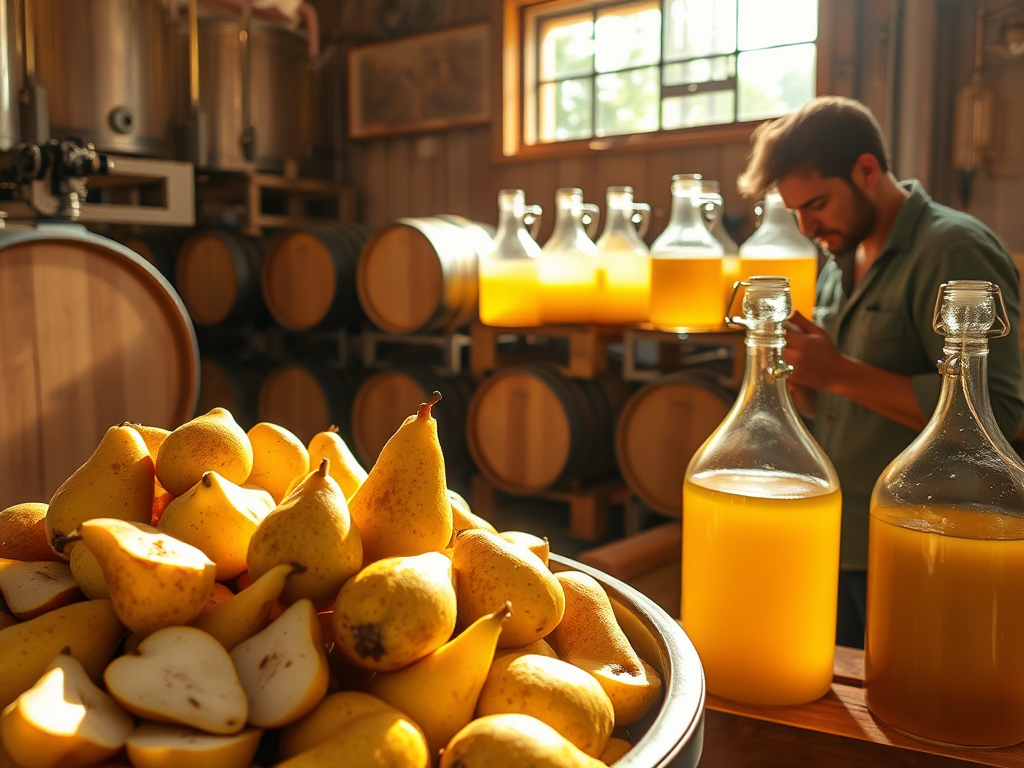
The creation of pear wine follows a similar path to traditional grape wine, but with its own fruity twist. The process begins with selecting the right pears – varieties like Bartlett and Comice are favorites for their juicy, aromatic qualities. Some winemakers even prefer using slightly overripe pears for their concentrated sweetness.
These pears are crushed to extract their juice, which is then fermented with specific yeasts chosen to highlight the fruit’s natural characteristics. The fermentation transforms the sugars into alcohol while preserving the delicate pear essence. While some producers blend in apple or grape juice to adjust the flavor profile, purists focus solely on pears to maintain authenticity.
- Fermented from ripe or overripe pears
- Some winemakers blend with apple or grape juice
- Can be still or slightly sparkling
- Typically undergoes aging of 6-12 months
The most fascinating part of pear wine production is how the terroir (the environment where the pears grow) influences the final product. Just like with grape wines, the soil, climate, and growing conditions all contribute to the pear wine’s distinctive character. This is why pear wines from different regions can taste so unique. For those interested in other fruit wines, plum wine or umeshu follows similar production methods.
Pear Wine vs Pear Cider: Understanding the Difference
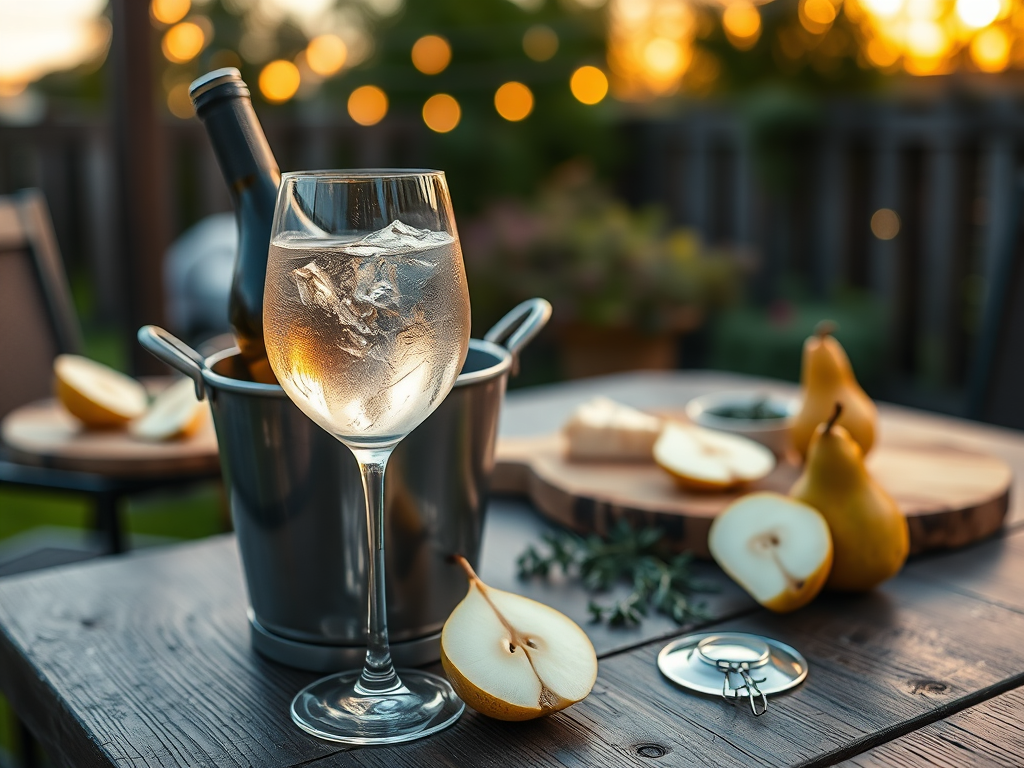
One of the most common confusions I encounter when talking about pear wine is people mixing it up with pear cider or perry. While they share the same fruit origin, they’re completely different beverages with distinct production methods and drinking experiences.
Pear wine is fermented like traditional wine, resulting in a still beverage with higher alcohol content (typically 10-14%). It undergoes a longer fermentation and aging process, creating deeper, more complex flavors. The result is something you’d sip and savor, served in a wine glass.
“If you love white wine but want a seasonal twist, pear wine is the sip you didn’t know you needed.”
- Pear cider (perry) is fizzy and lower in alcohol (4-7%)
- Pear wine is typically still and more refined
- Perry is made specifically with traditional perry pears
- Pear wine follows wine-making techniques rather than brewing methods
A friend once described the difference perfectly: “Pear cider is what you bring to a picnic in a cooler; pear wine is what you serve with dinner.” That distinction captures it well – both are lovely, but they serve different purposes in your drinking repertoire. If you enjoy exploring fruit-based beverages, currant wine offers another interesting option with more intense flavors.
When and How to Serve Pear Wine

Serving pear wine at the right temperature makes all the difference in experiencing its full flavor profile. Unlike some heavier red wines, pear wine shines when properly chilled but not cold. The sweet spot is generally between 50-55°F – cool enough to be refreshing but not so cold that it mutes the delicate pear aromas.
For glassware, I’ve found that white wine glasses work beautifully. Their slightly narrower openings help concentrate the fruity fragrance while still giving the wine room to breathe. When I hosted a summer gathering last month, the pear wine in stemmed glasses caught the sunlight beautifully – a visual bonus to the tasting experience!
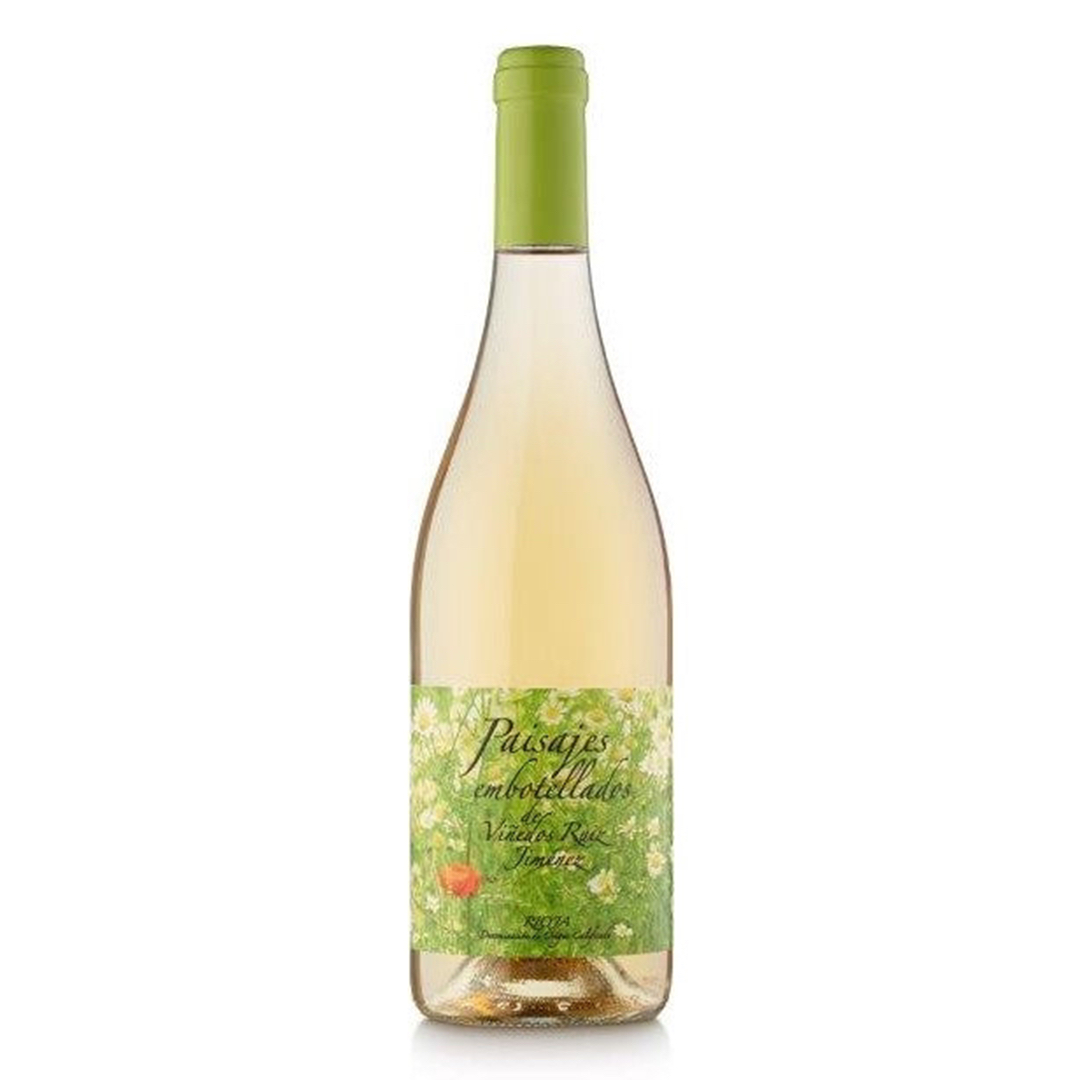
- Chill to 50–55°F for optimal balance of aroma and flavor
- Serve in white wine glasses to preserve fragrance
- Perfect for brunch, light dinners, or sipping on its own
- Works wonderfully in wine spritzers or seasonal sangria
Don’t limit pear wine to just straight sipping! It makes a fantastic base for cocktails and sangrias. My personal favorite summer refresher combines pear wine with a splash of elderflower liqueur and fresh berries. The gentle sweetness of pear wine also makes it a natural companion to blueberry wine in mixed drinks for a complex fruit profile.
Perfect Pairings for Pear Wine
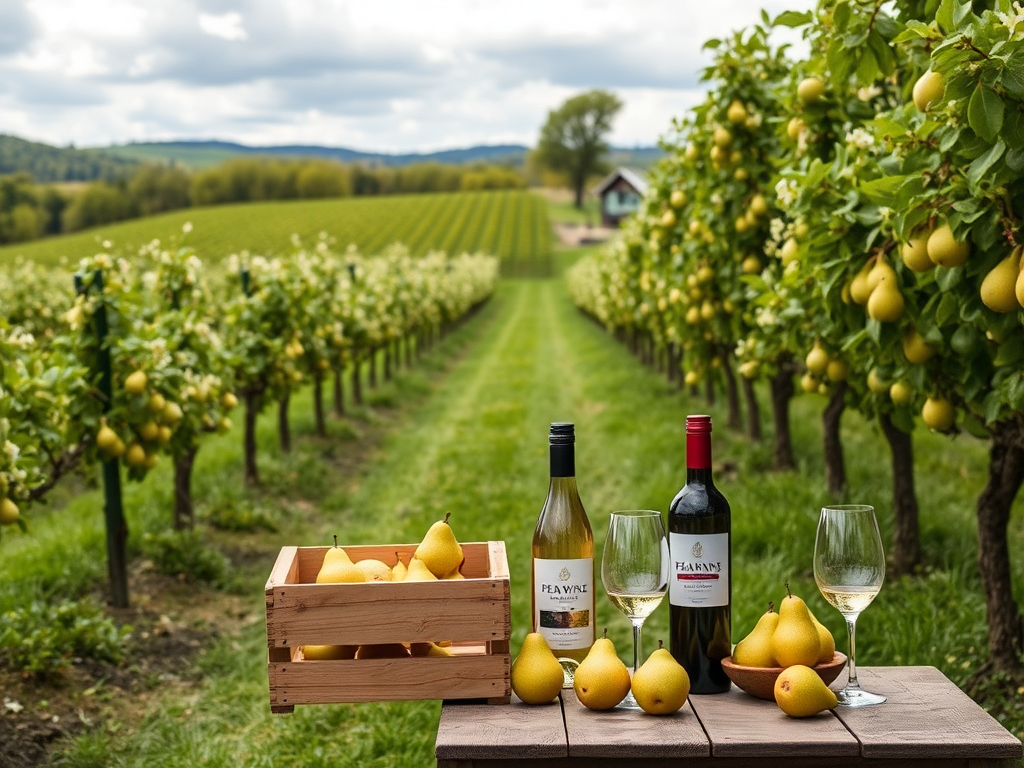
The beauty of pear wine lies in its remarkable food-pairing flexibility. Its natural sweetness and gentle acidity make it incredibly versatile at mealtimes. One of the most surprising discoveries I’ve made is how brilliantly pear wine stands up to spicy foods – the subtle sweetness balances the heat in dishes like Thai curries or spicy ramen.
Cheese pairings are where pear wine truly shines. The fruity notes complement creamy, soft cheeses like Brie or Camembert perfectly. For an easy but impressive appetizer spread, I like to pair a chilled pear wine with a board featuring soft cheeses, prosciutto, and fresh fruit. The combination feels elegant but doesn’t require any cooking!
| Dish Type | Pairing Notes |
|---|---|
| Cheese & Charcuterie | Brie, prosciutto, fig jam |
| Spicy Cuisine | Thai curry, tikka masala, spicy ramen |
| Desserts | Pear galette, panna cotta, shortbread |
| Brunch Foods | Quiche, fruit salad, eggs benedict |
- Soft cheeses like Brie, Camembert, or goat cheese
- Spicy Thai, Indian, or Korean dishes
- Light desserts: fruit tarts, shortbread, poached pears
- Seafood like scallops or mild white fish
Dessert pairings deserve special mention – pear wine with a simple pear galette or vanilla panna cotta creates a harmonious flavor experience where the wine and food complement each other perfectly. The fruity notes in both raspberry wine and pear wine also make them excellent companions for chocolate desserts.
Where to Find the Best Pear Wine
Finding quality pear wine requires a bit more searching than grabbing a bottle of Chardonnay, but that’s part of what makes discovering a great one so rewarding. Small-batch producers and local craft wineries often create the most interesting pear wines. My favorite bottle came from a tiny family-owned orchard that decided to diversify into winemaking – their attention to detail was evident in every sip.

Farmers markets have become unexpected treasure troves for discovering pear wine. Local producers often sell directly at these markets, giving you the chance to talk with the makers and sometimes even sample before buying. I’ve had wonderful conversations with winemakers who are passionate about highlighting their regional pear varieties.
- Local wineries and cideries that feature fruit wines
- Specialty wine shops focusing on unique offerings
- Online retailers specializing in craft beverages
- Seasonal wine club subscriptions featuring fruit wines
For those who prefer shopping online, several specialty wine retailers have expanded their fruit wine selections. Websites like Wine.com and more specialized retailers like Astor Wines often carry select pear wines. Some wineries also ship directly to consumers, especially if you join their wine clubs which frequently feature small-batch specialties not available elsewhere.
Common Questions About Pear Wine
When introducing friends to pear wine, I’m often met with curious questions about this less familiar option. Most people wonder about the sweetness level and serving style. While most pear wines do have some natural sweetness, they range widely from barely off-dry to dessert-sweet, so it’s worth asking about a particular bottle’s profile before purchasing.
Another frequent question is about storage and shelf life. Like other wines, unopened pear wine should be stored on its side in a cool, dark place. Once opened, it typically stays fresh for 3-5 days when refrigerated with a proper wine stopper. The refrigeration is key – pear wine deteriorates faster at room temperature than many grape wines.
- Is pear wine always sweet? Most are off-dry to medium-sweet, but drier versions exist
- Should pear wine be carbonated? Traditional versions are still, but some modern interpretations add slight effervescence
- Can you cook with pear wine? Absolutely! It makes a lovely poaching liquid for fruits or flavor base for sauces
- Is pear wine gluten-free? Yes, as it’s made from fruit without grain additives
Health-conscious friends often ask about calories and sugar content. While pear wine typically contains more residual sugar than dry grape wines, the exact amounts vary widely by producer. Some craft winemakers are now creating lower-sugar versions that maintain the pear character while reducing sweetness for those watching their sugar intake.
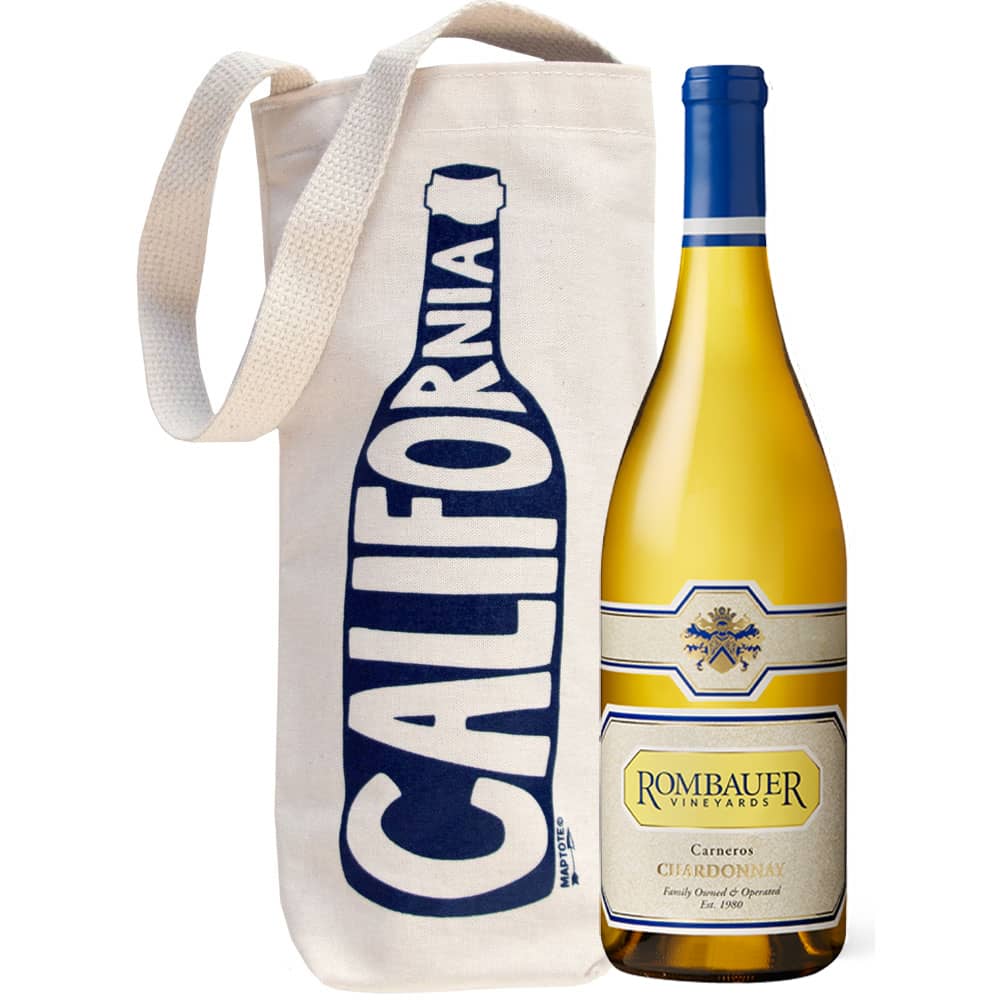
As pear wine grows in popularity, expect to see more variety in styles and production methods. The craft wine movement continues to push boundaries and explore new techniques that may well revolutionize how we think about fruit wines in the coming years.
Pear wine has rightfully earned its moment in the spotlight. Its approachable character makes it perfect for wine newbies while offering enough complexity to interest seasoned sippers. The versatility in food pairings from brunch to dessert gives it practical appeal for any meal.
Next time you’re looking to branch out from your usual wine selection, give pear wine a chance. Its unique orchard-fresh flavor might just make it your new favorite. After all, the most delightful discoveries often come from venturing beyond the familiar. Your taste buds will thank you for the fruity adventure!




